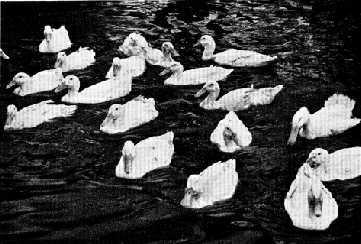

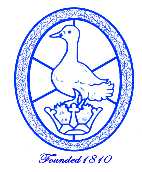





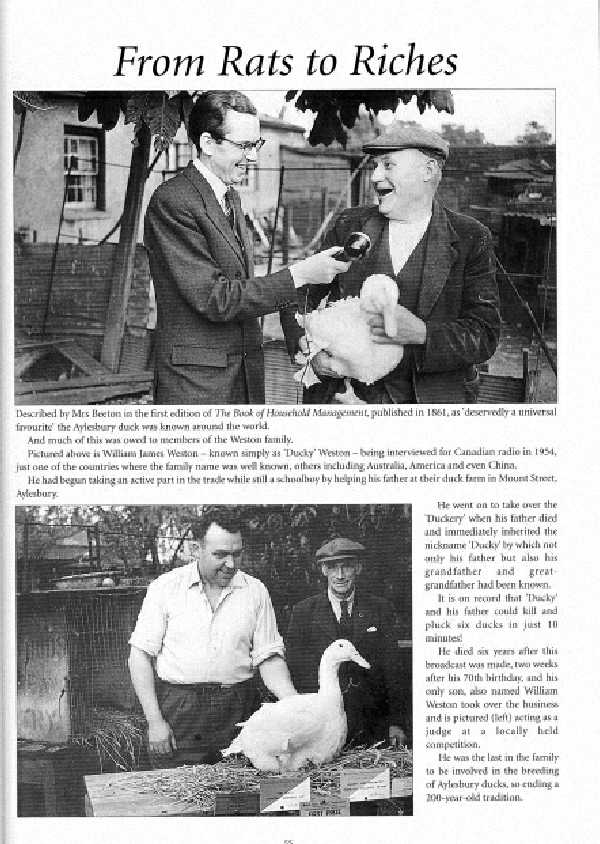
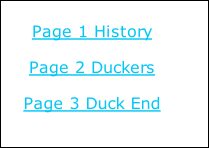




"Aylesbury—that's where the ducks come from, isn't it?" Yes, and if the town had no other claim to fame, it could at least boast that its ducks are known throughout the world.
These large white birds have been bred in the town for over 150 years, and at one time thousands were sent to the London markets each season. A hundred years ago nearly every cottager in the Oxford Road district—then called Duck End—kept his own breeding pen consisting of four ducks and a drake, and very often the birds would share the family's living quarters; in fact, it was not unusual to find them in the best bedroom.
Though these old 'Muckers" have long since vanished from the scene, and most local ducks are now raised in the villages around Aylesbury, the county town can still boast of one breeder whose family have been in the business from the start, 150 years ago. This is Mr W. J. (Duckie) Weston, of Mount Street, who talks of the time when "Each cottager would mark his birds with a distinguishing dab of paint and turn them out in the morning to march like soldiers down the street to the mill stream. At dusk, the ducks would return and separate, each set to its own home, and hardly one would go astray."
Mr Weston's farm is the home of superb exhibition ducks, as well as those bred specially for the table. The latter are killed when about nine weeks old and then weigh from 7 to 8 lb. each. It is this great size for a young bird which has made the Aylesbury duckling such a favourite for the table, and a favourite it is all over the world. "Duckie" Weston has himself sent birds for breeding purposes to Australia, the United States
THE AYLESBURY
DUCK
MR. W. J. WESTON WITH ONE OF HIS EXHIBITION DUCKS
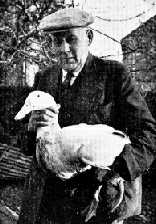

and China. An interesting point is that hens are used for hatching the eggs as ducks make notoriously poor mothers.
How does one recognise an Aylesbury duck, apart from its size and pure white plumage? Mr Weston, who has bred a 28lb. Couple and has won many awards for his birds, is also a well-
Each year, two quite different events take place in the town to perpetuate the fame of the Aylesbury duck. The Duck Dinner, organised by the Mayor, brings people together from all walks of life, so that they may sample the bird and hear some first-
Started in 1951 as part of the Festival celebrations, the Aylesbury Duck Trial tests the claims to “married bliss” made by competing couples; it is a lighthearted affair, and the first prize is, of course, a pair of Aylesbury ducks. The Trial now forms part of the summer entertainments at the Vale Park.
